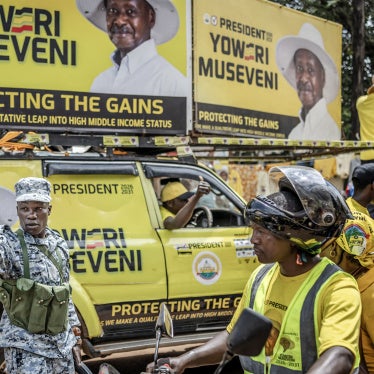How did the Central African Republic reach its current violent state?
The modern history of Central African Republic begins in 1960 when it achieved independence from France, part of the wave of independence that swept across Africa. But since then, its people have been subjected to decades of misrule. Nearly every time power has changed hands, the transition has been marked by violence.
Between independence and early 2013, five men have led the country. Most were overthrown in coups, sometimes with external involvement. Nearly all the leaders silenced opposition, some more violently than others. International pressure resulted in the election of a civilian government in 1993, but like previous governments, this one slid into misrule. Corruption by those in power has impeded the realization of the social and economic rights for Central African Republic’s impoverished residents.
What set the stage for the latest coup and the violence?
In 2003, General François Bozizé, then the military chief of staff, backed by Arabic-speaking allies from Chad and residents of the country’s northeast, overthrew the unpopular civilian government. Bozizé’s ascension to power failed to bring stability, leaving the country at the bottom for global development indicators. Rival rebel groups began fighting each other as well as the government. Bozizé had a falling out with Chad. Numerous peace agreements were signed by regional parties in 2011-2012, but peace proved short-lived.
How was the government overthrown in the spring of 2013?
A group of rebel factions calling itself “Seleka,” or “Alliance,” coalesced from among the anti-government militias. They were northern anti-government forces that had signed the peace agreements and were predominantly Muslim in a country where the majority of people are Christian. Changes stipulated under the peace deal – development aid for the north, the release of political prisoners, and justice for a northern leader who was forcibly “disappeared” – had not materialized quickly enough for the rebels. Frustrated by the lack of change under Bozizé, roughly 5,000 Seleka rebels fought their way from northern Central African Republic to the capital, Bangui, seizing power in a coup on March 24.
Are the Seleka in power now?
No. Michel Djotodia, the Seleka leader who formally became president in August 2013, officially disbanded the Seleka in September, but they continued to commit atrocities. During their rule, the Seleka indiscriminately killed scores of civilians, engaged in rampant looting, and burned numerous villages to the ground. Their allies include foreign mercenaries and warlords from neighboring Sudan and Chad. The presence of foreign Muslim fighters has exacerbated tensions with the Christian majority, threatening a long history of harmony between the two groups.
In January Djotodia resigned as interim president, and the National Transitional Council elected Catherine Samba Panza, the mayor of Bangui, in his place.
How did the Christian population respond to Seleka violence?
In September, mostly Christian local armed groups known as the anti-balaka began rising up against the Seleka.
The anti-balaka – which translates as “anti-machete” - have indiscriminately attacked and killed Muslim civilians, equating all Muslims with the Seleka. Despite the history of Muslims and Christians living together relatively peacefully in Central African Republic, members of the anti-balaka have used incendiary rhetoric and brutal tactics against Muslim residents, many of whom have been forced to flee the country.
On December 5, the anti-balaka started an offensive on Bangui, displacing the Seleka. Now the Seleka remain active only in isolated pockets of the country.
Who is fighting whom?
From September to December, it was the Seleka and the anti-balaka – but they almost never fought each other directly. Each side attacked civilians from communities they believe are associated with their enemies. However, in 2014 things have changed. Many Seleka elements have fled to Chad, leaving a large part of the Muslim civilian population defenseless. Fifty thousand Muslims have been flown out of the country on emergency flights; tens of thousands more have fled in road convoys, frequently attacked by anti-balaka forces on the way. If the violence against Muslims continues, an important part of society in Central African Republic could disappear.
What’s different about the conflict this time?
The Christian-Muslim fighting adds a dangerous element to Central African Republic’s history of violence. Despite the efforts of French and African Union peacekeepers, attacks against civilians are widespread. Both Christians and Muslims have been burned alive in their homes. Attackers have slit children's throats. Both sides share responsibility for these abuses. Rebuilding trust and institutions will take time, money, and a great deal of effort.







